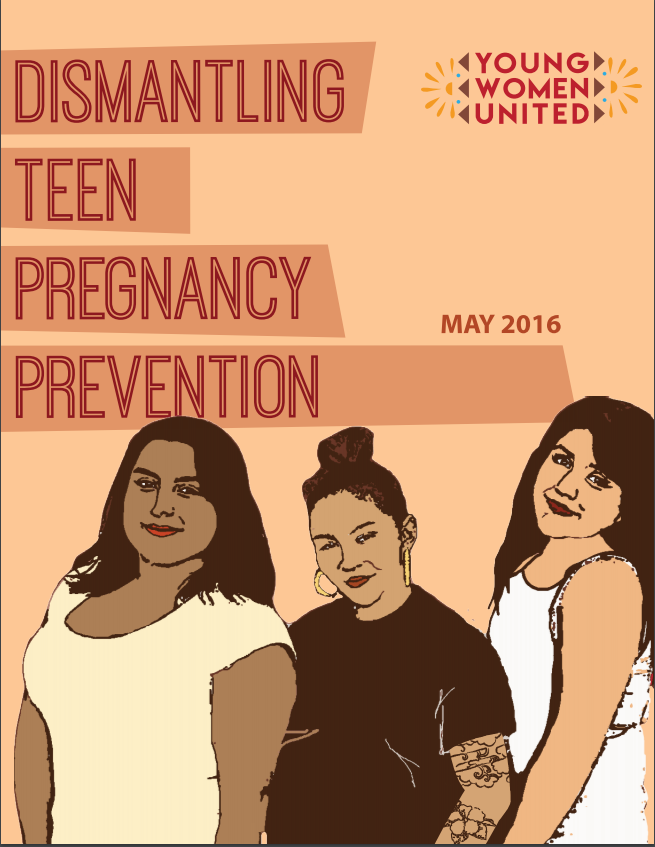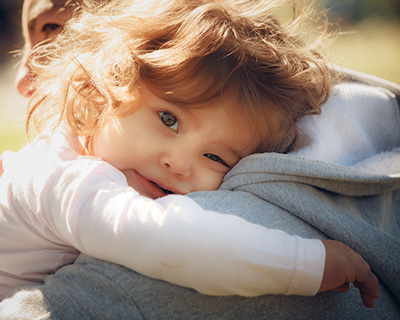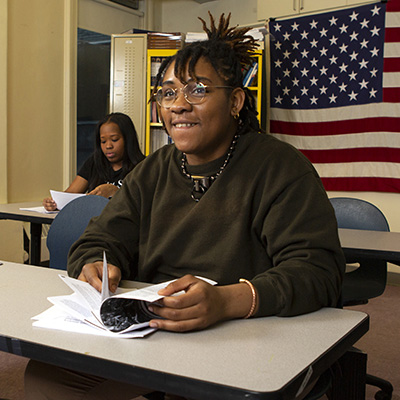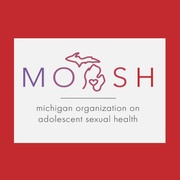Expectant & Parenting Youth: Greater Inclusivity + Less Stigma = Better Outcomes
By Taryn Gal, MPH, CPH, CHES and Brittany Batell, MPH, MSW | August 28, 2019
Executive Director (TG) and Program and Engagement Manager (BB), MOASH
There has been an amazing push for greater inclusivity in sex education in recent years. The field offers programs that are more inclusive for LGBTQ+ youth, for survivors of trauma, and for youth with learning differences or developmental disabilities. We make these efforts because we are committed to creating a learning environment where all identities and choices are honored.
That’s why it’s also important for us to be sure we are creating welcoming, inclusive and effective sexuality education for expectant and parenting youth (EPY).
At the Michigan Organization on Adolescent Sexual Health (MOASH), our mission is to mobilize youth voices, engage community partners, and inform decision-makers to advance sexual health, identities and rights. Support for EPY is right up there at the top of our list.
Expectant and Parenting Youth Inclusivity Toolkit
MOASH has just released the Expectant and Parenting Youth Inclusivity Toolkit, designed for service providers, educators, family members and others. The Toolkit focuses on ways to support expectant and parenting youth. Find the toolkit here, and other supportive resources here.
Checking Our Assumptions
As a society and as a field, we’ve made a lot of assumptions about young people, pregnancy and parenting that are ready for a closer look. Despite our best intentions, we’ve used language and concepts that exclude and stigmatize young people. Today, through youth voice, we’ve been called to re-examine many of our ideas, shift our perspectives, and create more affirming and effective programming.
Stigmatizing concepts have been built into our work at every level—in funding proposals, in educational programs, in laws and policies, and in public discourse. For example, we’ve made efforts to prevent the “problem” of teen pregnancy. We’ve taken steps to stop “babies having babies.” We’ve warned young people that if they become teen parents, they are going to suffer negative consequences and raise children who have poor health and educational outcomes. We’ve appealed to young people not to make “mistakes” in their reproductive health choices.

We’re delighted to announce our just-published Expectant and Parenting Youth Inclusivity Toolkit.
What Young People Tell Us
As we developed our Toolkit, we talked to our colleagues within MOASH, to staff at MI-APPP, and, most importantly, to young parents and other youth. Here are some of the things we heard that helped us look at some of our assumptions. Hopefully they will help you look at yours, too.
We chose parenthood. Upholding the tenets of reproductive justice means that we have to recognize and honor the young people who made the decision to become parents. It may have been an unplanned pregnancy, but that is distinct from “unwanted.” Additionally, while the majority of teen pregnancies are unintended, we must recognize that some of these pregnancies are in fact planned.
 I’m an involved dad. I care about my child. Many support programs focus solely on teen moms, assuming that teen fathers will not be very involved in their child’s life. However, many young fathers do want to be involved. In fact, they may be making a considerable effort to be a good provider by working one or more jobs. This can limit the time they have to spend with their child. Young fathers need support to stay engaged with their child. They also need resources to optimize their opportunities.
I’m an involved dad. I care about my child. Many support programs focus solely on teen moms, assuming that teen fathers will not be very involved in their child’s life. However, many young fathers do want to be involved. In fact, they may be making a considerable effort to be a good provider by working one or more jobs. This can limit the time they have to spend with their child. Young fathers need support to stay engaged with their child. They also need resources to optimize their opportunities.
I need sexual health information, too. Young parents are as much in need of information on contraception and family planning, STI prevention, and healthy relationships as other youth. Pregnancy prevention efforts often make heteronormative assumptions about expectant and parenting youth. In fact, LGBTQ+ youth are more likely to experience an unintended pregnancy than cisgender, heterosexual youth. There are multiple factors that contribute to this, but the take-home is that we must build and deliver programs that are inclusive and engaging for youth of all gender and sexual identities and orientations.
I belong here, too. Most programs focusing on pregnancy prevention make a set of assumptions about participants—for example, that they have never been pregnant and are not currently pregnant. They are not currently parenting. They do not have a pregnant or parenting partner. They are not planning a pregnancy with a current partner.
We need to remember that teen pregnancy and parenting are not necessarily visible identities. If we assume that we have expectant and parenting youth in all of our programs, we will do a better job choosing language and activities that do not stigmatize, shame or blame. The most effective programs include information that will be useful and relevant to EPY.
 My child is not a bad outcome. In funding and educational programs, we’ve had a tendency to lump together what we consider negative sexual health outcomes that we are trying to prevent. Pregnancy is discussed in the same breath as STIs. Being involved in a teen pregnancy is seen as a failure. Even the names of our programs themselves—“teen pregnancy prevention”—can be stigmatizing and exclude EPY. Let’s lift our programs out of this kind of stigma and blame with the framework, “Our goal is to ensure any future pregnancies are planned.”
My child is not a bad outcome. In funding and educational programs, we’ve had a tendency to lump together what we consider negative sexual health outcomes that we are trying to prevent. Pregnancy is discussed in the same breath as STIs. Being involved in a teen pregnancy is seen as a failure. Even the names of our programs themselves—“teen pregnancy prevention”—can be stigmatizing and exclude EPY. Let’s lift our programs out of this kind of stigma and blame with the framework, “Our goal is to ensure any future pregnancies are planned.”
I want knowledge and tools to plan my best future. This is a drive for personal growth and development that all youth share. Being a young parent may even heighten this drive for some. All youth deserve a chance to focus on opportunities and goals.
Changing Our Language, Changing Our Thinking
When we do workshops, participants sometimes feel overwhelmed by the complexity of these issues. “It will take so much work to do all of this!” they exclaim. When we hear this response, we emphasize that making these types of changes is an ongoing and iterative process. You don’t need to immediately change an entire program. It can begin with some relatively easy, small steps.
Looking at language is a great place to start. Our Toolkit offers suggestions for more gender-inclusive language that avoids judgment and assumptions. For example, simply changing our terms from “teen moms” to “young moms and dads” or “young parents” helps shift the narrative that teen pregnancy is only relevant to young women, and boosts the visibility of expectant and parenting young fathers.
Using “partner” instead of “boyfriend/girlfriend” is a more gender-neutral way to talk about relationships. It also avoids assumptions about relationships—a teen father is not necessarily the mother’s boyfriend.
These may seem like minor changes. But the cumulative effect of positive, affirming and inclusive language is amazing. It makes a difference.
Listen to Youth
The most important thing any of us can do—providers, educators, researchers, parents, legislators, funders—is  listen to young people. Along with our partners at MI-APPP, we did a lot of listening as we put together our Toolkit. We were learning constantly, and we will continue learning, because we are going to continue to listen.
listen to young people. Along with our partners at MI-APPP, we did a lot of listening as we put together our Toolkit. We were learning constantly, and we will continue learning, because we are going to continue to listen.
Nothing can strengthen a youth-focused program as much as asking young people what they think, calling for their suggestions, and then doing what they ask of us. Use the terms they use. Use examples relevant to their experiences. Invite them to correct us when we make mistakes. And always remember that youth are the experts in their own lives.
Taryn Gal, MPH, CPH, CHES is Executive Director at MOASH and has worked in the sexual health promotion field for the past ten years. She can be reached at taryn.gal@moash.org. Brittany Batell, MPH, MSW, is the Program and Engagement Manager at MOASH. She has worked as a sex educator, reproductive justice advocate, and health consultant. She can be reached at brittany.batell@moash.org.





